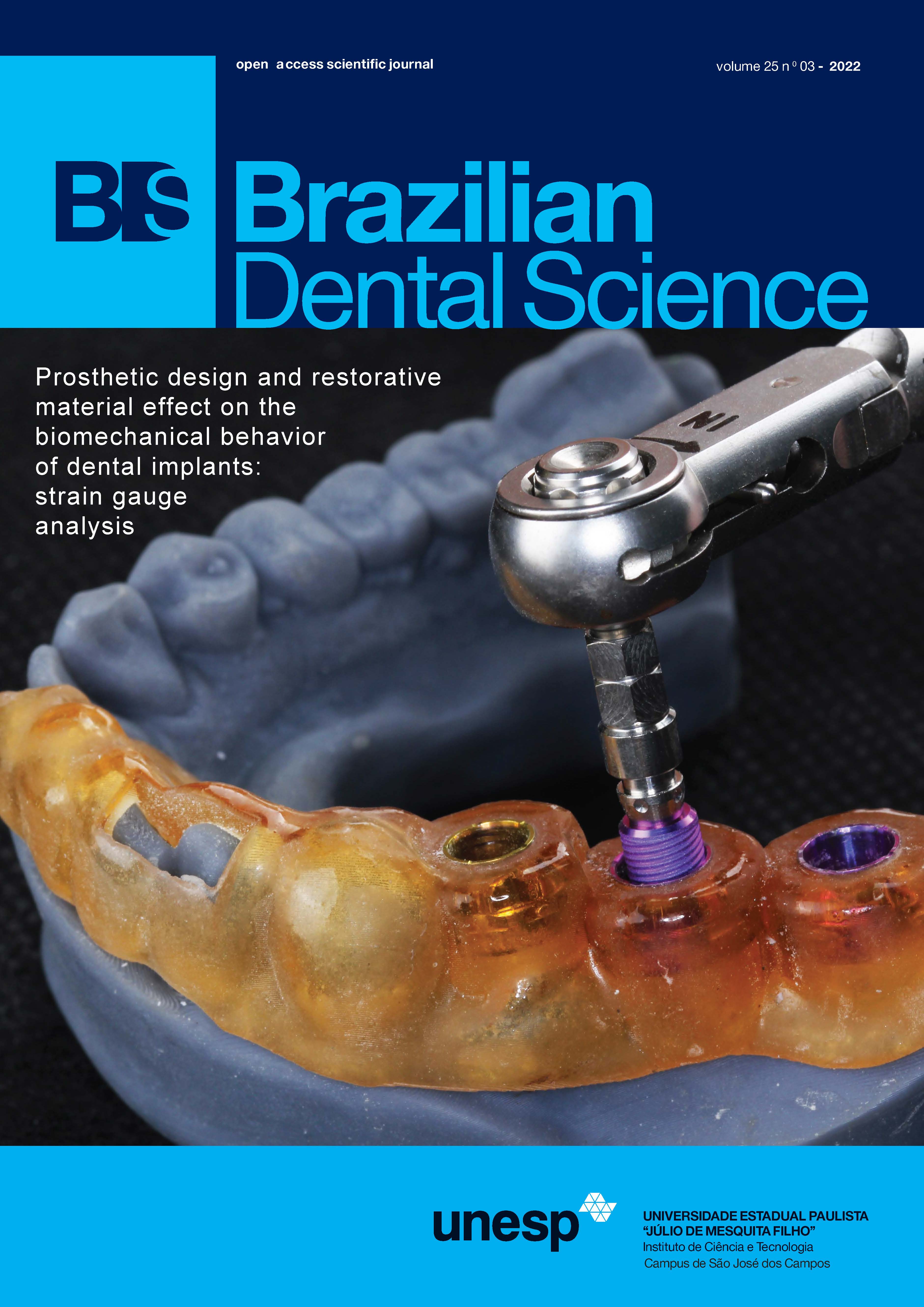Longevity of bonded composite restorations after dentin biomodification with neolignans obtained from Nectandra leucantha
DOI:
https://doi.org/10.4322/bds.2022.e3300Abstract
Objective: This in vitro study evaluated the effect of neolignan-containing solutions on dentin biomodification
previously applied to the bonding procedure in adhesive restorations. Material and Methods: Neolignans,
dehydrodieugenol B–CP1 and dehydrodieugenol B methyl ether–CP2, were isolated from Nectandra leucantha
and two aqueous solutions containing 0.13% neolignans, 0.2% propylene glycol and 3.0% ethanol were prepared.
Bovine teeth were ground flat to obtain 2-mm thick specimens which received resin composite restorations
(N=10). The neolignan solutions were applied before the bonding procedure (60 s). Experimental groups were:
control, untreated group, 0.12% chlorhexidine gel, 0.13% CP1 solution, and 0.13% CP2 solution. A push-out
bond strength test was conducted (0.5 mm/min). Bovine tooth sections (0.5×1.7×7.0 mm) were also obtained to
assess the modulus of elasticity and mass change after treatment (N=15). A three-point bending test evaluated the
elastic modulus of fully demineralized dentine beams after immersion in the solutions. The data were statistically
analyzed (a = 0.05). Results: The bond strength of the restorations to dentin was significantly improved by the
treatment with neolignan-containing solutions, irrespective of the evaluation time (p<0.05). After 6 months, a
significant reduction in the bond strength was observed in the groups treated with the solutions (p>0.05), but
the means were significantly higher than the control groups (p<0.05). The elastic modulus of demineralized
dentin was significantly improved after the treatment with the solutions (p<0.05). All groups lost mass weight.
Conclusion: The solutions improved the in vitro longevity of bonded restorations, possibly due to the dentin
biomodification effect of the neolignans.
KEYWORDS
Dental restorations; Permanent; Dentin; Collagen type I; Plants medicinal; Lignans.
Downloads
Downloads
Published
How to Cite
Issue
Section
License
Brazilian Dental Science uses the Creative Commons (CC-BY 4.0) license, thus preserving the integrity of articles in an open access environment. The journal allows the author to retain publishing rights without restrictions.
=================




























